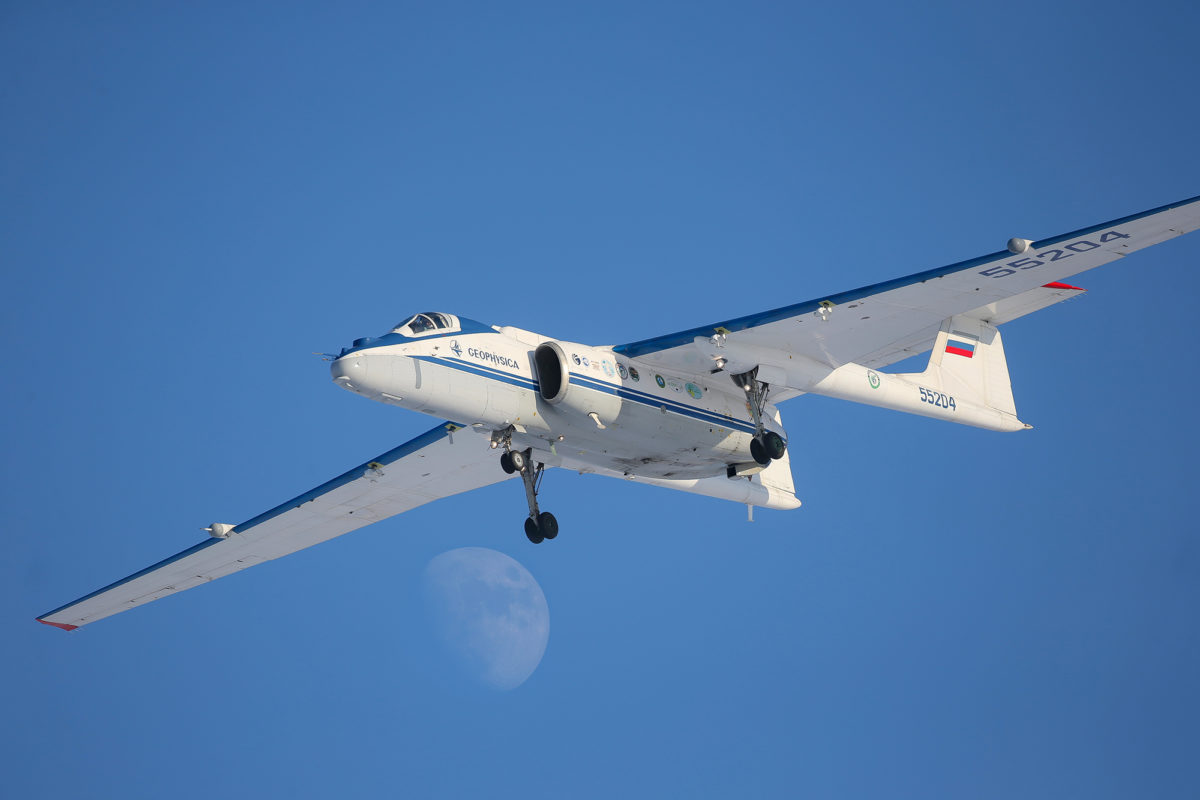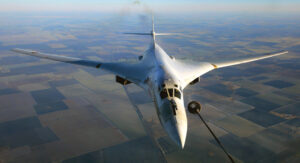Myasishchev M-55 Geophysica
This issue’s “mystery” is really a Mystic—if you’re that member of the North Atlantic Treaty Organization who thinks up distinctive names for opposing aircraft, in this case under the category of “M” for “meteorological.” If you’re Russian, it’s an M-55 Geophysica, the latest in a line of high-flying spyplanes that underwent a career change in the 1990s.
Back in the 1950s and ’60s, Cold War espionage from the air emphasized altitude as the primary defense. Its best-known avatar was the Lockheed U-2, but the United States also tried to develop high-altitude reconnaissance balloons that the jet stream would propel over to the Soviet Union or China. In response, the Myasishchev design bureau proposed Subject 34 “Chaika” (seagull), a twin-boom turbojet aircraft capable of intercepting and shooting down the intruders. Before the project reached the balloon-busting stage, however, the Americans dropped their program because reconnaissance satellites and the high-altitude, high-speed Lockheed A-12 were proving far more successful.
In spite of the accidental destruction of the Chaika prototype in December 1978, Myasishchev was loath to scrap the entire program and revised it to develop the M-17 Stratosphera reconnaissance plane, powered by a Kolesov RD-36-51 turbojet engine. Flying for the first time on May 26, 1982, the M-17 set 12 Fédération Aéronautique Internationale (FAI) world records for its class, five of which still stand. Given the NATO codename Mystic-A, it entered service after the A-12 and SR-71 had rendered other high-altitude spyplanes obsolete, so it spent its time gathering meteorological data, such as investigating the ozone layer over Antarctica in 1992.
Meanwhile, with balloon interception officially abandoned in 1987, Myasishchev continued development of a weather plane with the M-17RN, later redesignated the M-55 Geophysica, which first flew on August 16, 1988. This had a longer fuselage pod than its predecessor, housing two Soloviev D-30-10V turbofans generating 20,950 pounds of thrust each, as well as shorter span wings and a comprehensive sensor payload.
On September 21, 1993, Viktor Vasenkov flew an M-55 to 70,080 feet, an FAI record for Class C-1j (landplanes with a takeoff weight of 44,000 to 55,000 pounds). Mystic-B, as NATO called the M-55, established a total of 15 FAI records, all of which still stand. A total of five were built, including the M-55UTS two-seat trainer. As with the M-17, the M-55 currently performs research roles such as studies of the Arctic stratosphere in 1996-97 and over Antarctica in 1999. QucomHaps, an Irish-headquartered firm with a focus on Southeast Asia, recently made a $1 billion deal to use the M-55 as a high-altitude platform station for digital communications.





